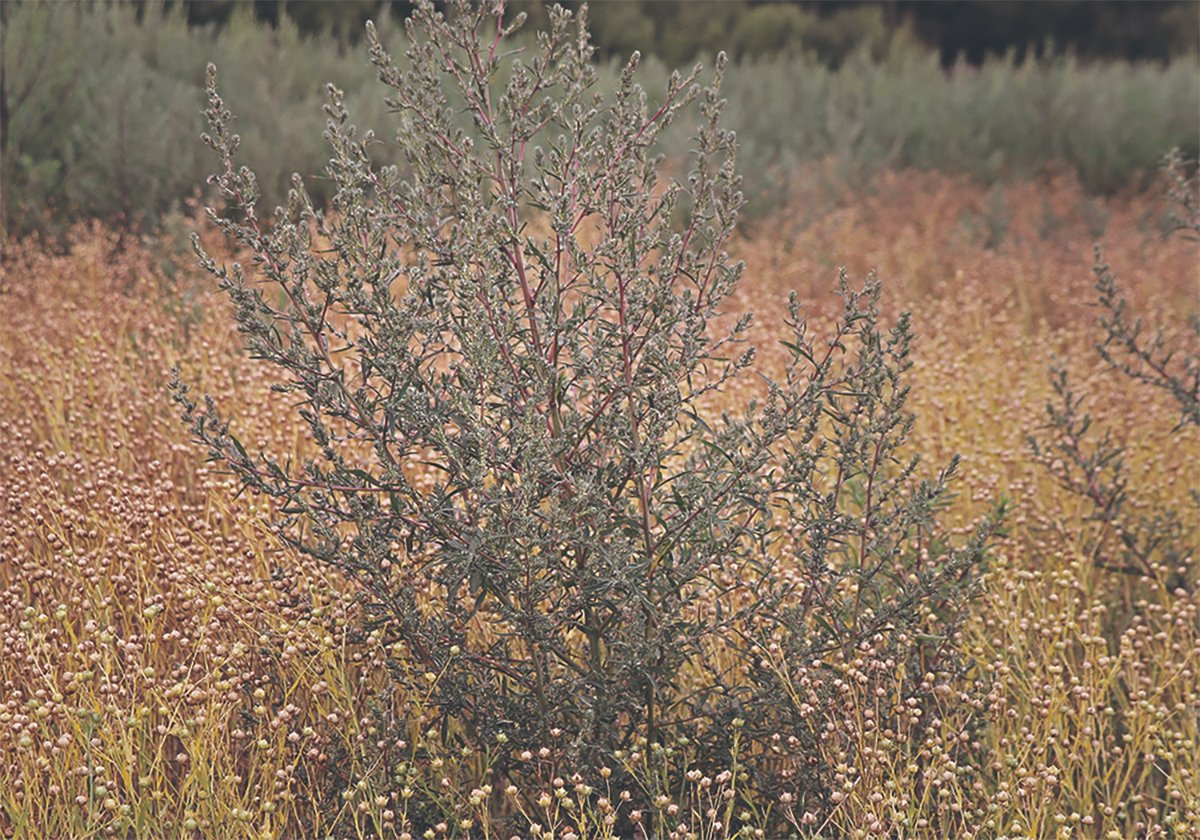They say bull markets have long tails.
It means that when grain shortages cause prices to soar, it usually prompts increased production that depresses the market for a lot longer than the shortages buoyed them.
Depressed markets were the watchwords at Crop Production Week in Saskatoon last week.
But amid the gloom there were two small bright spots regarding wheat, although they were hardly enough to lighten the mood.
The first came from the United States Department of Agriculture.
Its Jan. 12 winter wheat seeding report cut the 2005 winter wheat seedings estimate to 41.6 million acres, down four percent from a year earlier and lower than analysts’ expectations for 43.203 million acres.
Read Also

Kochia has become a significant problem for Prairie farmers
As you travel through southern Saskatchewan and Alberta, particularly in areas challenged by dry growing conditions, the magnitude of the kochia problem is easy to see.
This raised hopes for lower U.S. production in 2005-06, but that price-supporting news was balanced by an increase of 2004-05 world wheat production to a record 620.89 million tonnes, up 2.63 million from the previous estimate. It also raised world ending stocks to 145.29 million tonnes from 142.83 million in the December outlook and 130.91 million at the end of 2003-04.
Also, any strength that the seeded area report gave to wheat was submerged in USDA’s estimate of the U.S. corn crop, up by 1.7 million tonnes over the December estimate. The soybean crop was slightly reduced, but still record large.
The second bright spot was news from Peter Watts of the Canadian Wheat Board that changes to the European Union’s common agriculture policy, or CAP, could help Canadian durum growers.
The CAP is shifting from providing commodity-specific subsidies to general farm income support. Under the old program, supports for durum were more attractive than for other grains, encouraging greater production.
Italy, the largest durum producer in Europe, and Portugal are the first to adopt the reform.
Watts said durum acreage in Italy might drop 15-20 percent this year. That would be positive for world durum prices.
“Italy is the largest user of durum in the world and if they lose 15-20 percent of their production, yeah, it will have an impact on demand. They are concerned about this in Europe, the semolina millers and pasta makers,” Watts said.
The CAP change will be implemented in France, Spain and Greece, other major European durum producers, in 2006.
Watts thinks Italian farmers will shift durum acres to corn, soft wheat and feed barley.
Set against this price-positive development is the fact that durum production in North Africa, the world’s largest importer of the wheat, looks good and should not need big imports. Watts also noted that as CAP reform spreads to more northerly parts of the European Union, it could help Canadian malting barley producers. Previously, malting barley varieties were subsidized more favourably than feed barley varieties. Without the extra support, malting barley production in the EU could decline, reducing the competition for Canadian malting barley.
















